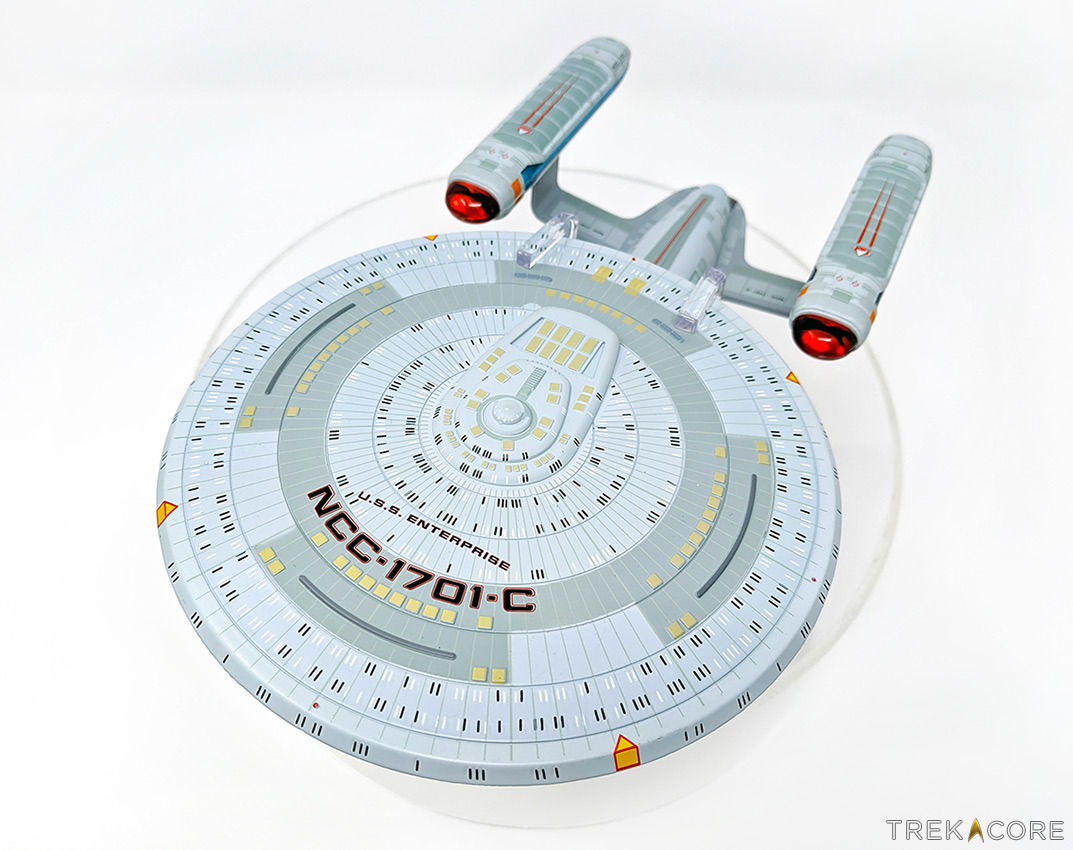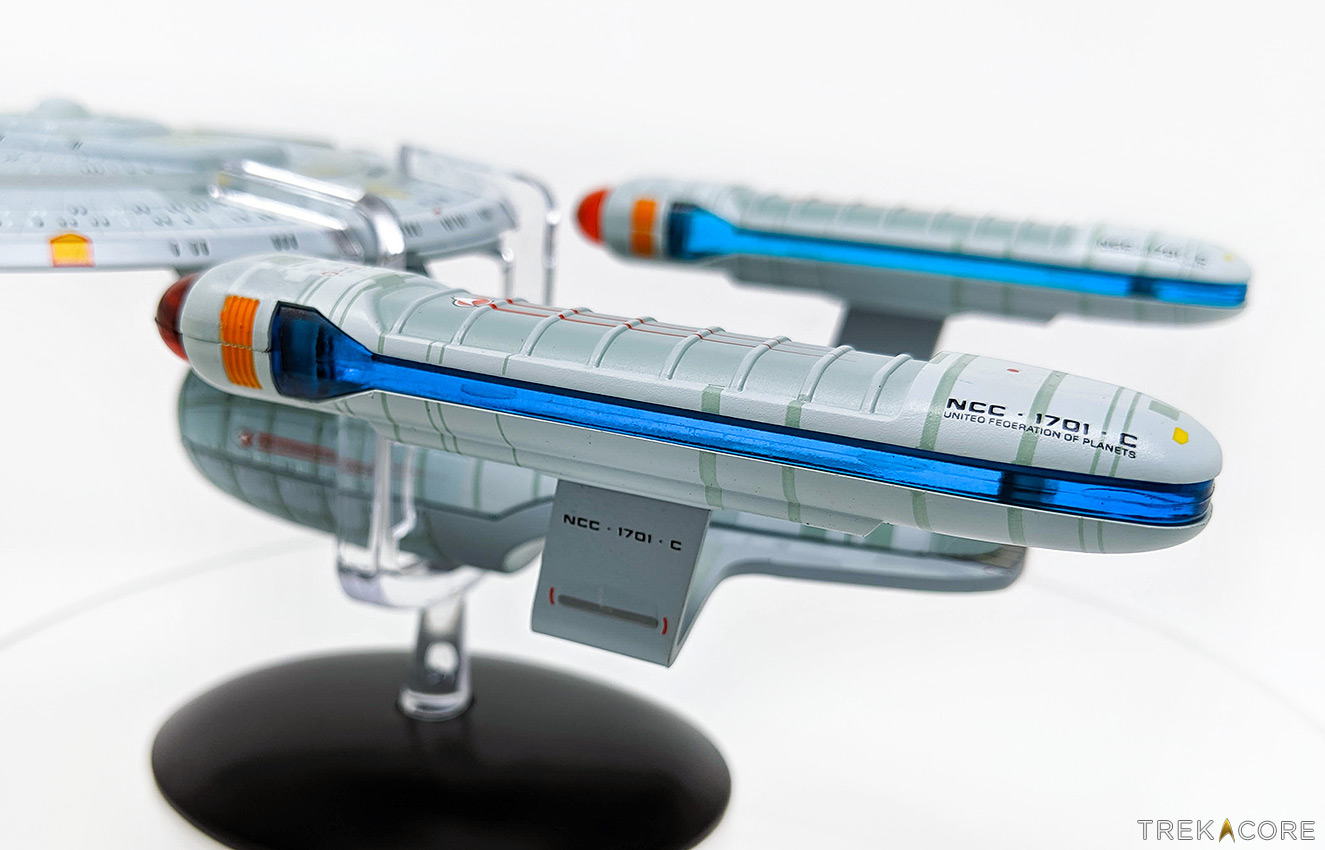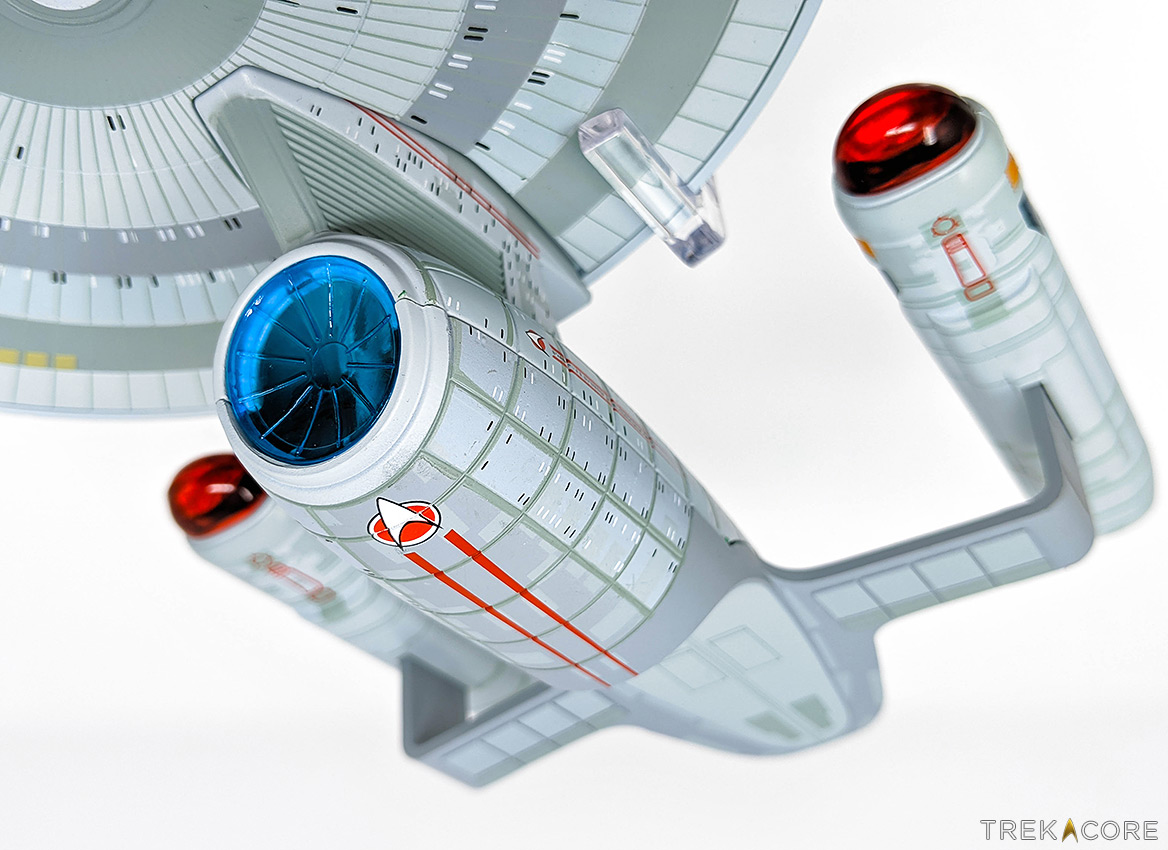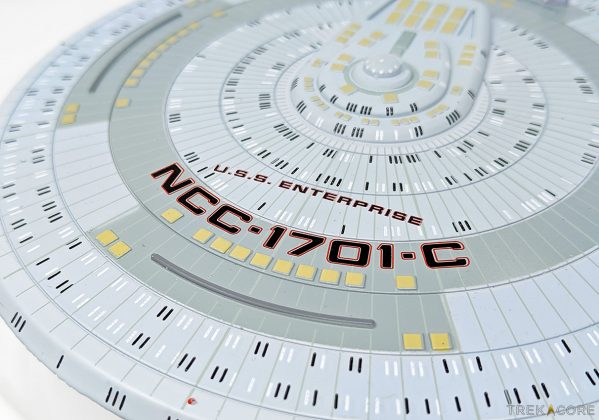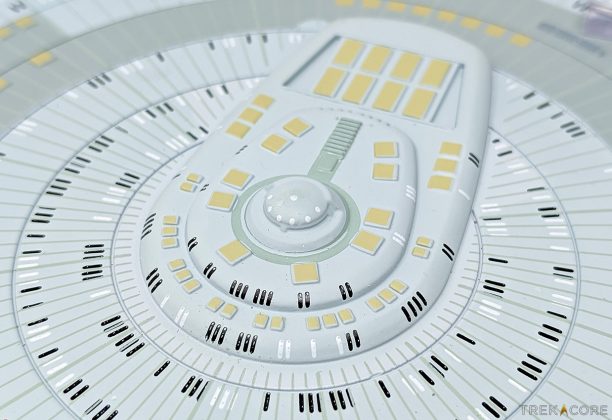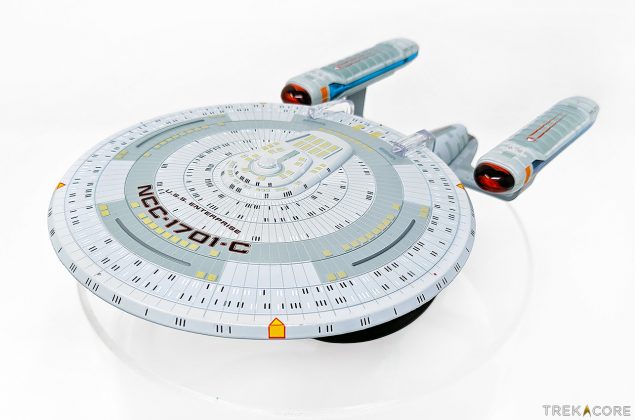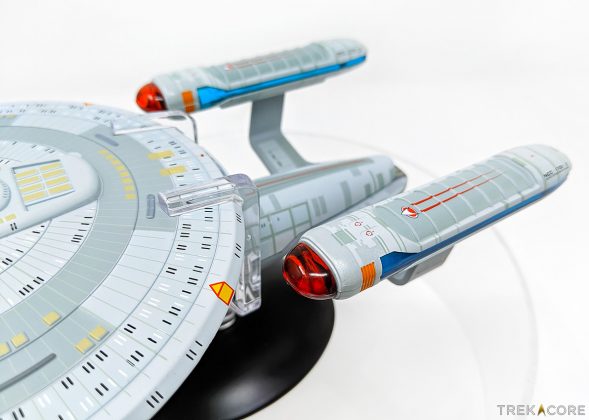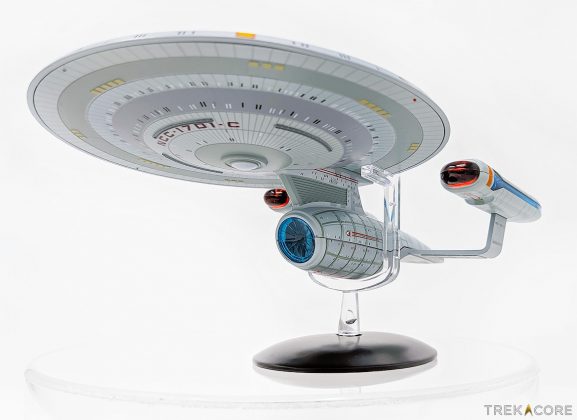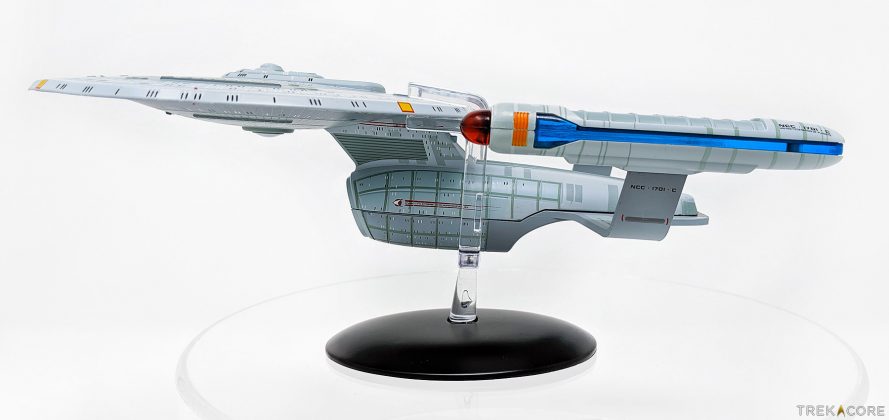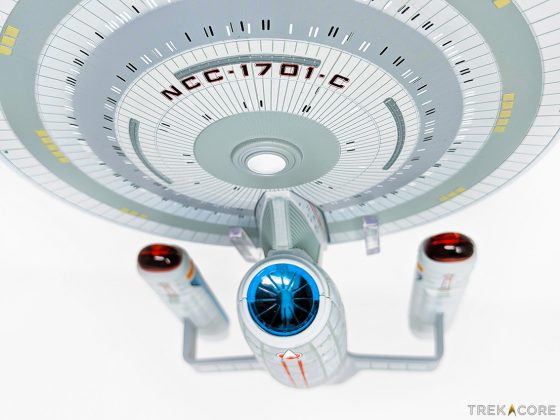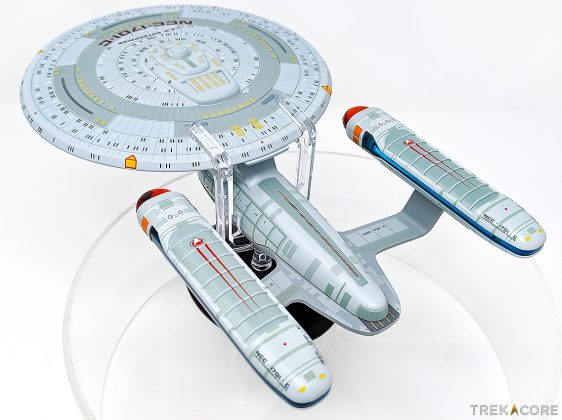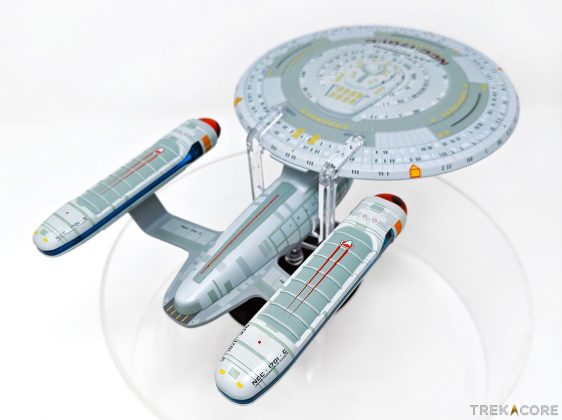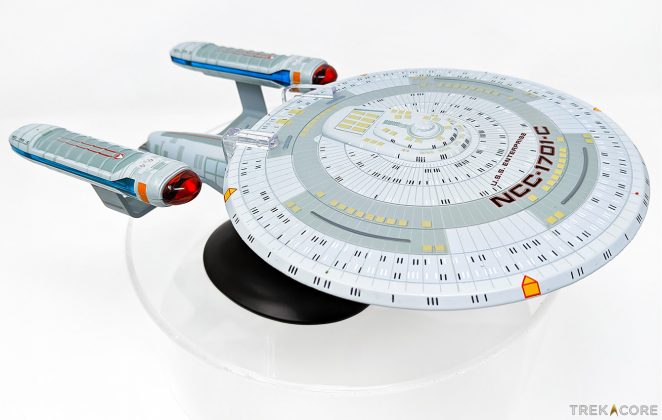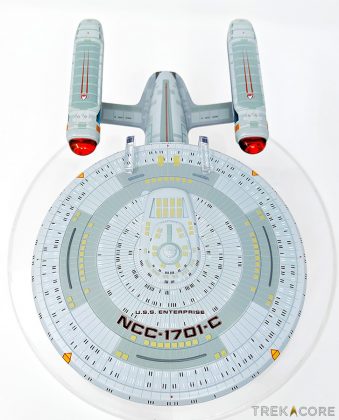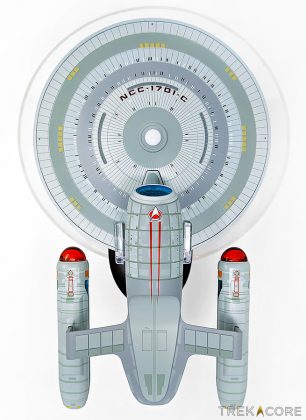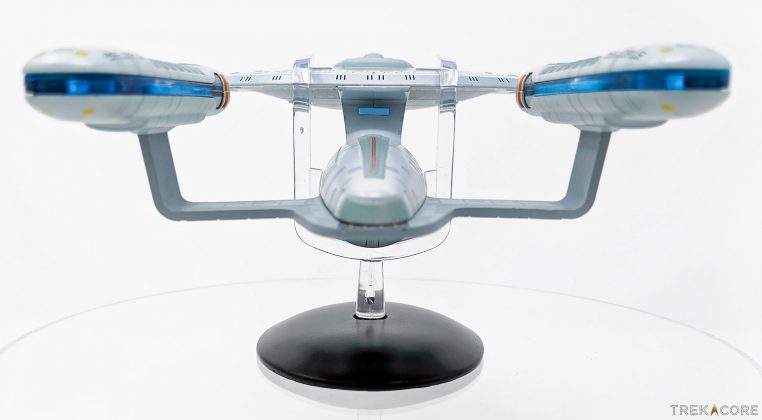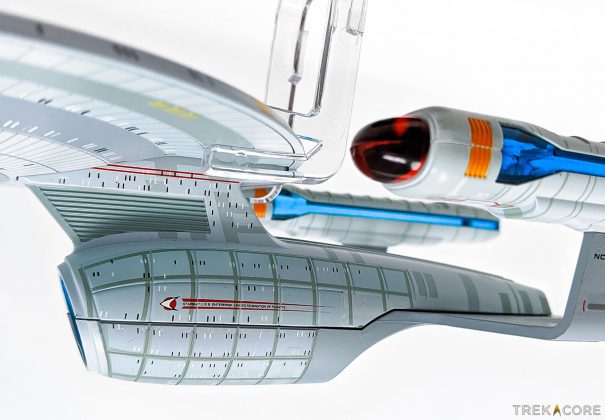The larger-scale Ambassador-class USS Enterprise (NCC-1701-C) warped into collector’s hands earlier this year, and in the process completed the initial ten releases that Hero Collector had promised for the XL collection when the line was announced.
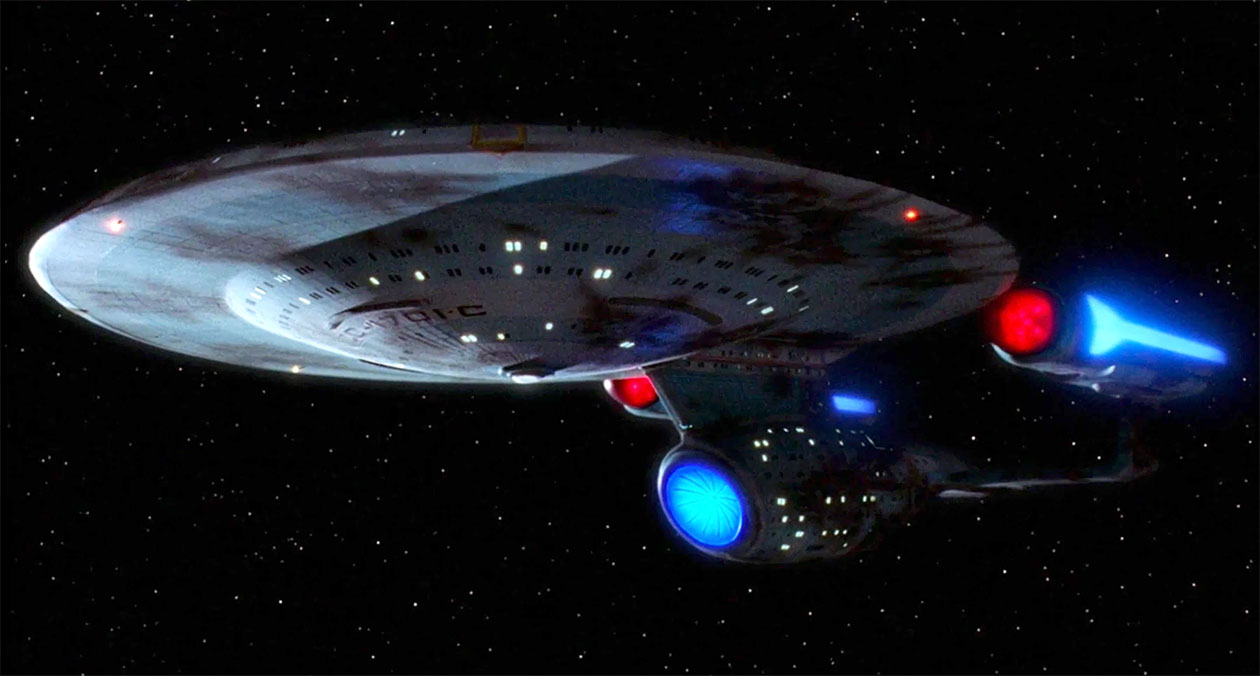
The XL Enterprise-C is a significant improvement upon the smaller version from the regular Official Starships Collection, which was met by significant criticisms from fans for both its shape and detailing. Many of the XL-sized models are just sized-up versions of the original release (the most recent release in the line, the XL Runabout, suffers from being such), but it is clear with the Enterprise-C that many of the criticisms of the standard release were heard, and a number of corrections were made.
In fairness to Hero Collector, many of the issues that relate to making a great model of the Ambassador-class derive from the fact that there were — and reports differ on this — either two different studio models of the Ambassador-class ship, or the Enterprise-C underwent significant structural changes following its appearance in “Yesterday’s Enterprise.”
The ship as it appeared in “Data’s Day,” (as the USS Zhukov) and “Emissary,” (as the USS Yamaguchi) had many significant changes from the Enterprise-C model as it appeared in “Yesterday’s Enterprise.” Even structurally, the shape of what I assume to be the two different models deviates in a number of ways, particularly around the nacelles and the secondary hull.
The XL Enterprise-C is in many ways a hybrid of the two ships, but hews much closer to the Ambassador-class from its first appearance in “Yesterday’s Enterprise” than the smaller version released as part of the main line.
The model, like most of the XL line, looks great. The detailing is crisp, and the ship has the heft to it that you would expect for the higher price point. On this ship, the top of the saucer and much of the secondary hull is die cast metal, whereas the nacelles and flat aft section of the secondary hull are plastic.
The biggest change from the standard line release of the Enterprise-C, which is sure to please many fans, is the addition of the impulse engine to the neck of the ship. The engine is painted blue, which is accurate to the “Yesterday’s Enterprise” version of the ship, but is not accurate to the later version of the model where it was colored red — see why this is challenging?
The saucer gets many details right for the “Yesterday’s Enterprise” studio model, except for the painted life boats at the rear of the saucer. Those were not present on the USS Enterprise-C, but were present on the second version of the model that displayed the subsequent ships.
The place where they hybrid nature of this model is most evident is on the nacelles. The “Yesterday’s Enterprise” version had rounder, more bulbous nacelles than the XL model, whose shape sits much more in line with the second version of the model. But it is not completely accurate to that version of the model either; the second model had caps over the nacelles, which are absent on the XL and more true to “Yesterday’s Enterprise.”
The stand for this model is sturdy, and grips it both at the back of the nacelles and around the secondary hull. The placement may detract slightly from the presentation, but there will not be some of the issues with slipping seen on the USS Voyager or the USS Reliant with this ship, and given the weight of the ship other stand placements would likely not have provided as much support.
A few other minor issues with the model include missing stripes around the rim of the saucer, an issue with many of these models — and because the deflector dish is large and clear, you can easily see the support bracket inside the model that is holding the top and bottom of the secondary hull together.
But honestly, none of these issues take away from the fact that this is a gorgeous model, and that Hero Collector has clearly listened to feedback and concerns that fans had about the smaller version of the model in developing this one.
In addition, the Enterprise-C continues the recent trend of ditching the window indentations that has led to such pernicious recurring problems with properly aligning the paint with those indentations. No indentations means no misalignment.
The production history of the Ambassador-class is clearly a fascinating one – were there really two models? Or was the model significantly altered? Why was that? These are all questions worth pondering as you enjoy looking at this fabulous model upon your shelf.
![]()
If the Ambassador-class Enterprise-C is a ship you’d like to add to your personal fleet, you can get the 10.5″ starship model from Eaglemoss’ US web shop for $74.95, and in the UK you can pick it up for £49.99.

